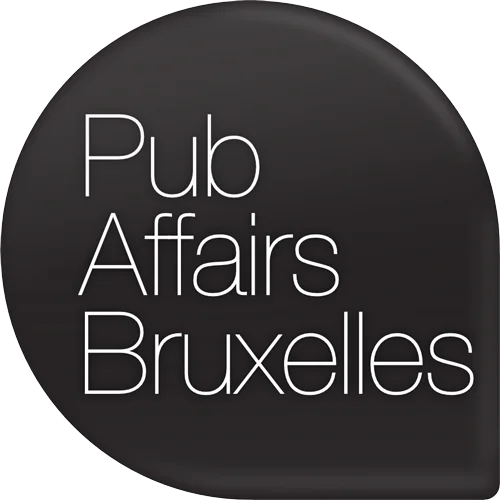Packaging and packaging waste: Council adopts its negotiating position on new rules for more sustainable packaging in the EU
 Image by Freepik
Image by FreepikToday the Council has reached an agreement (‘general approach’) on a proposal for a regulation on packaging and packaging waste. The aim is to tackle the increase in packaging waste generated in the EU, while harmonising the internal market for packaging and boosting the circular economy.
The proposal considers the full life cycle of packaging. It establishes requirements to ensure that packaging is safe and sustainable, by requiring that all packaging is recyclable and that the presence of substances of concern is minimised. It also sets labelling requirements to improve consumer information. In line with the waste hierarchy, the proposal aims to minimise the generation of packaging waste by setting binding re-use targets, restricting certain types of single-use packaging and requiring economic operators to minimise the packaging used.
Once the packaging becomes waste, the proposal aims to ensure that packaging is collected, sorted and recycled to the highest possible standard. To this end, it sets criteria for the extended producer responsibility schemes, and lays down provisions on waste management, while ensuring that member states have sufficient flexibility to maintain existing well-functioning systems.
The general approach will serve as a mandate for negotiations with the European Parliament on the final shape of the legislation.
Main changes agreed by the Council
The Council’s text strikes a balance between keeping the proposal’s ambition to reduce and prevent the generation of packaging waste, and allowing member states sufficient flexibility in the implementation of the regulation.
Scope of the regulation
The Council maintained the scope of the Commission’s proposal, covering all packaging, regardless of the material used, and all packaging waste, regardless of its origin (including industry, manufacturing, retail, households).
Sustainability requirements and recyclable packaging
The text of the general approach maintains most of the sustainability requirements for all packaging placed on the market and headline targets proposed by the Commission.
It strengthens the requirements for substances in packaging by calling on the Commission, assisted by the European Chemicals Agency, to prepare a report by 2026 on the presence of substances of concern in packaging, to determine whether they negatively affect the re-use or recycling of materials or have an impact on chemical safety.
The Council amended the proposal on recyclable packaging. While maintaining that all packaging placed on the market must be recyclable as proposed by the Commission, member states agreed that packaging will be considered recyclable when designed for material recycling, and when the waste packaging can be separately collected, sorted and recycled at scale (the latter condition will apply from 2035).
The general approach maintains the headline 2030 and 2040 targets for minimum recycled content in plastic packaging. By 2034, the Commission will have to review the implementation of the 2030 targets and assess the feasibility of the 2040 targets.
The Council also agreed that tea bags and sticky labels on fruit and vegetables must be compostable, introducing the option for member states to require other packaging (e.g. coffee pods and lightweight plastic carrier bags) to be compostable under specific conditions.
The new rules would reduce unnecessary packaging by requiring manufacturers and importers to ensure that the weight and volume of packaging are minimised, except for protected packaging designs.
Packaging waste reduction targets
In line with the Commission’s proposal, the general approach sets overall headline targets for reducing packaging waste, based on 2018 quantities: 5% by 2030, 10% by 2035, and 15% by 2040. These targets will be subject to a review by the Commission eight years after the entry into force of the regulation.
The Council introduced the possibility for member states to set out packaging waste prevention measures exceeding the abovementioned minimum targets.
Reusable packaging and re-use targets
The Council maintained the Commission’s criteria to define reusable packaging, introducing a minimum number of trips or rotations in its use, with a lower minimum number of rotations for cardboard due to the different characteristics of this material.
The text sets new re-use and re-fill targets for 2030 and 2040. Different targets apply to large household appliances, take-away packages for food and beverages, alcoholic and non-alcoholic beverages (excluding wine), transport packaging (excluding packaging used for dangerous goods or large-scale equipment and flexible packaging in direct contact with food) and grouped packaging. Cardboard packaging is also exempted from these requirements. A new possibility has been introduced for economic operators to form pools to meet the re-use targets on beverages.
The Council required the Commission to review the 2030 targets and, on that basis, assess the targets for 2040 and the exemptions laid out in the provision.
Deposit return schemes (DRS)
Under the new rules, by 2029, member states must ensure the separate collection of at least 90% annually of single-use plastic bottles and metal beverage containers. To achieve this target, they are required to set up deposit return systems (DRS) for those packaging formats. The minimum requirements for DRS will not apply to systems already in place before the entry into force of the regulation, if the systems in question achieve the 90% target by 2029.
The Council added an exemption from the requirement to introduce a DRS for member states with a rate of separate collection above 78% reached in 2026.
Restrictions on certain packaging formats
The new rules introduce restrictions on certain packaging formats, including single-use plastic packaging for fruit and vegetables, for food and beverages, condiments, sauces within the HORECA sector, and for small cosmetic and toiletry products used in the accommodation sector (e.g., shampoo or body lotion bottles).
The Council introduced the possibility for member states to set out exemptions under certain circumstances, including for organic fruit and vegetables.
Other provisions
Other amendments agreed by the Council include further clarifications on the labelling of packaging, ensuring that consumers are well informed about the material composition of packaging and its proper disposal when it become waste. The Council also introduced some flexibility to take into account the labelling systems already existing in some member states.
Moreover, the Council maintained most of the obligations for operators, manufacturers, importers and distributors as set out by the Commission’s proposal. It strengthened the obligations for logistical service providers to ensure producers using such services do not avoid their extended producer responsibility (EPR) obligations.
The Council extended the date of application of the regulation to 18 months after its entry into force
Next steps
The general approach will serve as the Council’s mandate for negotiations with the European Parliament on the final shape of the legislation. The outcome of the negotiations will have to be formally adopted by the Council and the Parliament.
Background
Packaging production and packaging waste management is an economically complex and important sector, generating a total turnover of €370 billion in the EU. As such, it has a significant role and potential in transforming Europe into a clean, sustainable, circular economy, in line with the European Green Deal. However, even though recycling rates have increased in the EU, the amount of waste generated from packaging is growing faster than recycling. Over the last decade, the amount of packaging waste has increased by nearly 25% and is expected to increase by another 19% until 2030 if no action is taken. For plastic packaging waste, the expected increase is 46% by 2030.
The current EU packaging and packaging waste directive was first adopted in 1994 and has been revised several times. It lays down rules for EU member states to ensure that the packaging placed on the EU market meets certain requirements and to adopt measures to prevent and manage packaging waste, in order to reach recycling targets for different types of packaging waste. However, several assessments of the directive have shown that it did not succeed in reducing the negative environmental impacts of packaging.
Against this backdrop, in November 2022 the Commission put forward a proposal for a regulation on packaging and packaging waste that would replace the existing directive. The European Parliament adopted its position on the proposed regulation at the plenary session on 22 November 2023. The two institutions will start negotiating on the final shape of the legislation under the Belgian presidency.
